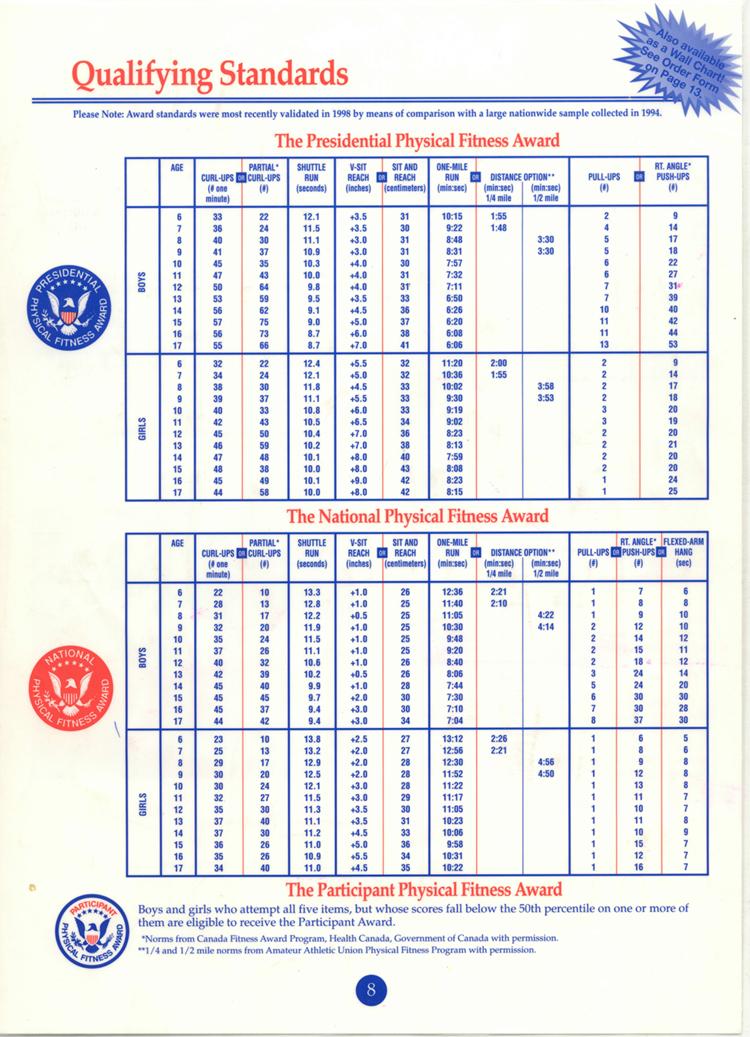Experts and school leaders across the nation have expressed enthusiasm over the reinstatement of the Presidential Fitness Test,a long-standing program aimed at promoting physical health among students. While many praise the initiative’s potential to encourage physical activity and foster healthy habits in youth, they also call for significant reforms to ensure the test is inclusive, equitable, and reflective of modern fitness standards. As the program makes a comeback,education and health professionals are weighing in on how best to adapt the test to meet the diverse needs of today’s student population.
Experts Praise Revival of Presidential Fitness Test as Boost to Student Health
Leading education and health experts emphasize the potential benefits of reintroducing the Presidential Fitness Test, highlighting its role in fostering a culture of physical well-being among students. They note that the test encourages children to actively engage in regular exercise, setting a foundation for lifelong healthy habits. School administrators commend the renewed focus on physical fitness, viewing the program as an opportunity to challenge students to improve their endurance, strength, and flexibility in a structured and measurable way.
However, several specialists urge a modernized approach to ensure inclusivity and relevance in today’s diverse classrooms.They advocate for:
- Adapted fitness metrics that accommodate varying physical abilities and ages
- Greater emphasis on mental health and overall wellness alongside physical achievements
- Integration of technology for real-time progress tracking and personalized fitness plans
To illustrate the updated framework,experts propose a balanced scoring system that prioritizes both participation and performance,as shown in the example below:
| Fitness Component | Weight in Score | Assessment Type |
|---|---|---|
| Cardiovascular Endurance | 40% | 1-mile run |
| Muscular Strength | 30% | Push-ups & sit-ups |
| Flexibility | 20% | Sit-and-reach test |
| Participation & Effort | 10% | Attendance & attitude |
School Leaders Call for Inclusive Assessment to Address Diverse Student Needs
School leaders are urging a reevaluation of current assessment methods to better reflect the growing diversity in student populations. They argue that conventional tests,including the Presidential Fitness Test,often fail to capture the full spectrum of abilities and needs presented by students from various backgrounds. The call is for adaptive evaluations that accommodate physical, cognitive, and emotional differences to ensure all students have an equitable platform to demonstrate their strengths.
Proponents of these reforms highlight several critical areas for advancement:
- Customization: Tailoring tests to include varied physical activities accessible to students with differing capabilities.
- Inclusivity: Integrating assessments that consider cultural and socio-economic factors influencing student performance.
- Holistic metrics: Expanding evaluation criteria beyond physical fitness to include teamwork, perseverance, and personal progress.
| Assessment Aspect | Current Status | Suggested Reform |
|---|---|---|
| Physical Tasks | Standardized for all students | Adaptive tasks based on ability |
| Emotional Consideration | Rarely included | Incorporate resilience and effort |
| Cultural Relevance | Limited awareness | Contextualize assessments regionally |
Recommendations Emphasize Modernizing Test Criteria and Incorporating Technology
Stakeholders agree that refreshing the fitness assessment framework is crucial to reflect contemporary health standards and technological advances. Emphasizing functional strength, flexibility, and endurance over traditional metrics like sit-ups and push-ups is gaining momentum. Experts suggest integrating wearable fitness trackers to provide real-time data, enabling a more personalized and accurate evaluation of each student’s physical condition. This shift aims to foster continuous motivation and a healthier lifestyle beyond the test days.
Furthermore, the adoption of digital platforms to administer and analyze test results could revolutionize tracking progress over time. Schools are encouraged to implement tools that:
- Automatically record and store individual and group performances
- Offer instant feedback and tailored exercise recommendations
- Enhance engagement through gamified fitness challenges
| Traditional Criteria | Modernized Approach |
|---|---|
| Number of sit-ups | Core strength assessment via resistance bands |
| Timed mile run | Cardiovascular fitness via step counters & heart monitors |
| Push-ups max reps | User-specific endurance tests with progress tracking apps |
Advocates Stress Importance of Ongoing Support and Community Engagement
Experts emphasize that the success of physical fitness initiatives hinges not only on testing but also on sustained encouragement and active community participation. Advocates argue that programs tailored to foster continuous motivation can bridge gaps that one-time assessments often leave unaddressed. This includes creating support networks involving parents, educators, and local organizations that champion healthy lifestyles beyond school hours.
- Parental workshops to reinforce positive fitness habits at home
- Community-led fitness challenges aimed at inclusivity
- After-school clubs focusing on various physical activities
- Regular feedback loops involving students and teachers to track progress
In a recent survey, stakeholders rated the impact of ongoing community engagement highly when it came to improving overall student fitness levels. The table below highlights the perceived benefits identified by educators and health professionals.
| Benefit | Percentage of Respondents |
|---|---|
| Improved Student Motivation | 82% |
| Enhanced Peer Support | 76% |
| Stronger Home-School Connections | 69% |
| Greater Awareness of Fitness Importance | 88% |
Concluding Remarks
As the Presidential Fitness Test gains renewed attention and enthusiasm from educators and health professionals alike, its potential to inspire a more active and health-conscious generation remains promising. However, experts and school leaders emphasize that without thoughtful reforms—such as updated standards, inclusivity measures, and motivational approaches—the program may fall short of its goals. Moving forward, stakeholders agree that balancing tradition with innovation will be key to ensuring the test not only measures fitness but also fosters lifelong healthy habits among students.








